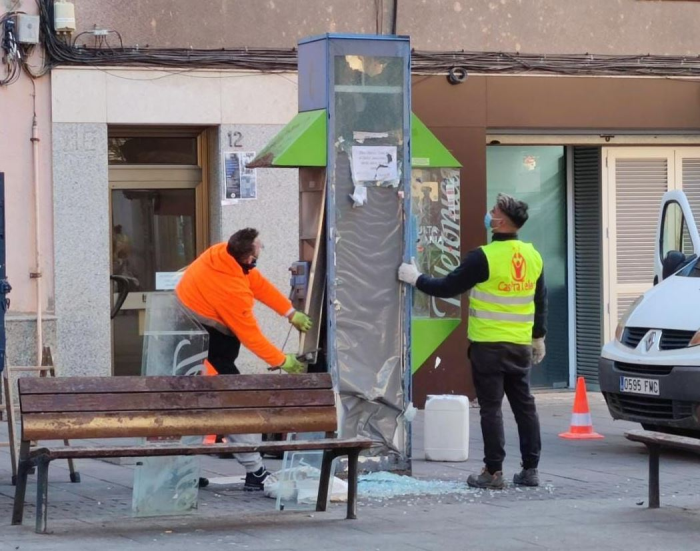The fort of the Galician Sea Museum will have a new vision from visitors from May after the consolidation work carried out during these days within an ambitious project that has been launched by the Department of Culture. The castreño town was located during the construction of the museum and there are several curious circumstances about it. The first, that it is an enclosure facing the sea and prior to the arrival of the Romans, but whose inhabitants maintained extensive commercial relations, including the Mediterranean Phoenicians. In one of the buildings the remains of an elemental altar were found, which is considered to be of Punic or Phoenician origin and which can still be seen in the place where it was found. However, in the interior collection of underwater archeology there is another piece of the altar, the most important. It is a very important finding because it opens the door to those ancient settlers already living in a world that was becoming global even before the arrival of Roman power. The castro is a value in itself but until now a specific treatment had not been carried out to give it its true value. The director of the museum, Marta Lucio, explained that the new permanent exhibition will have some surprises and that it will allow visitors to know better what life was like in the fort. All this can be seen in a new space that has begun to be assembled in the vicinity of the old fireplace, the only visible remnant of the canning and slaughterhouse before the museum.
Like all museums, the pandemic closed the center of Alcabre and later reduced arrivals by dropper, up to fifty a day. “Curiously, then more people began to arrive, most of them from Vigo who had not entered and who wanted to leave the house,” says Marta Lucio. He also points out that “streaming” has made it possible to maintain certain programming, with the viewing of its workshops in schools, without having to go through the Alcabre museum. However, the idea is to recover school visits as soon as possible and to give the complex built by César Portela to a design by Aldo Rossi, the only work in Spain by the Pritzker Prize-winning architect, as much life as possible.
As it is known, the Museum of the Sea has scheduled a monographic exhibition on Antonio Palacios that will open in September and where his facet as a modern architect and involved in the improvement of daily life and the importance he gave to the integration of the construction in the landscape The link between Palacios with the sea, Lucio points out, would be through some of his most famous works in the Vigo area, such as the Virgen de la Roca, in Baiona, or the Votive Temple of the Sea in Panxón. In Galicia they bear his signature. emblematic buildings such as the García Barbón theater, the Banca Viñas and the Las Salesas convent in Vigo, as well as the Porriño town hall, the Troncoso fountains (under renovation) and Gándara in Mondariz-Balneario or the Carballiño church. His most famous work was one that he could not even start; transform Vigo into the Barcelona of the Atlantic with its model Urban Planning Plan, approved in the Republic and annulled by the courts after enormous pressure against it. The exhibition will be titled “Antonio Palacios. Dreams of modernity. Commitment to Galicia ”, and brings together eight specialists who address different aspects of their career.





